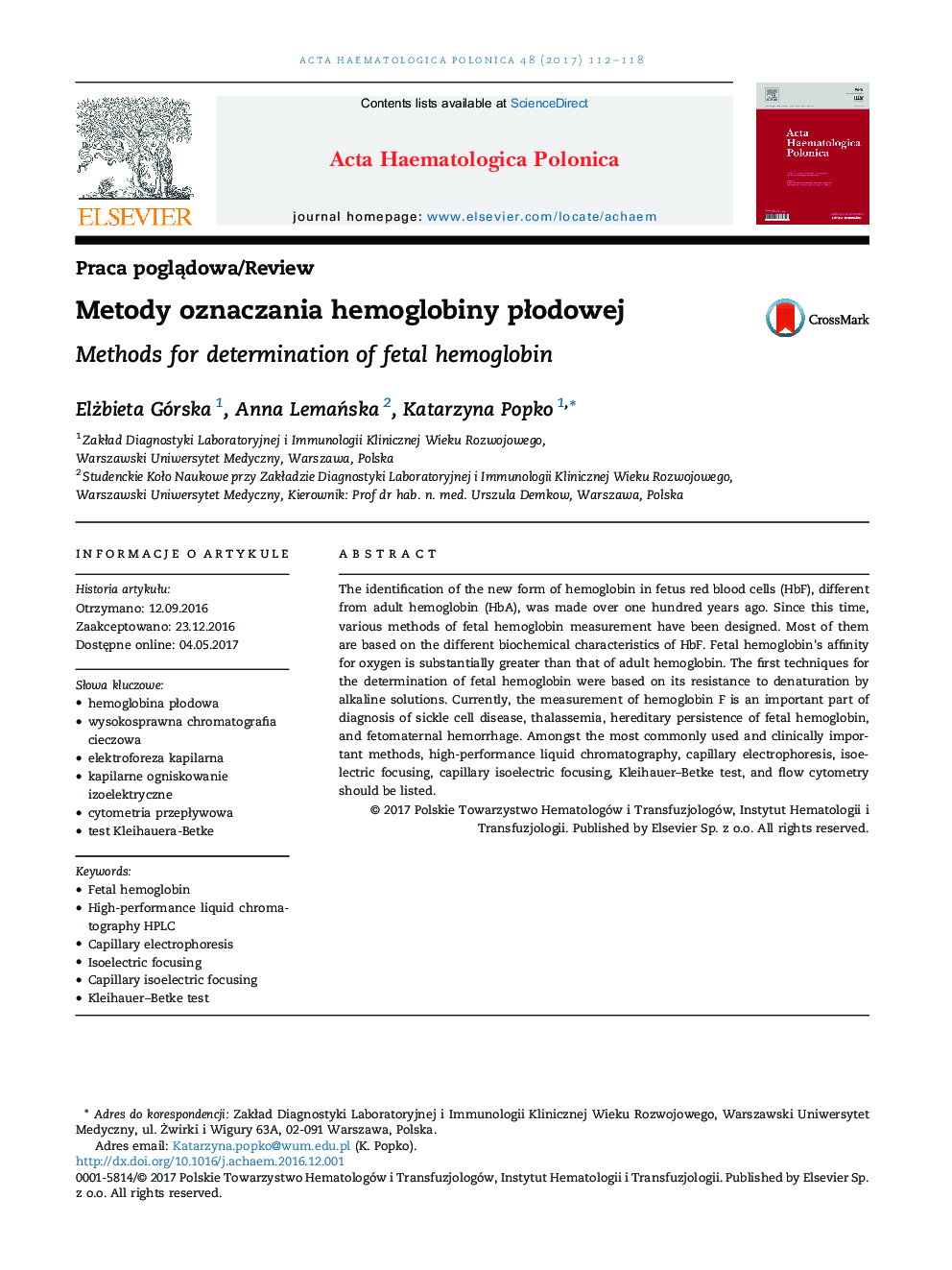| Article ID | Journal | Published Year | Pages | File Type |
|---|---|---|---|---|
| 5663842 | Acta Haematologica Polonica | 2017 | 7 Pages |
The identification of the new form of hemoglobin in fetus red blood cells (HbF), different from adult hemoglobin (HbA), was made over one hundred years ago. Since this time, various methods of fetal hemoglobin measurement have been designed. Most of them are based on the different biochemical characteristics of HbF. Fetal hemoglobin's affinity for oxygen is substantially greater than that of adult hemoglobin. The first techniques for the determination of fetal hemoglobin were based on its resistance to denaturation by alkaline solutions. Currently, the measurement of hemoglobin F is an important part of diagnosis of sickle cell disease, thalassemia, hereditary persistence of fetal hemoglobin, and fetomaternal hemorrhage. Amongst the most commonly used and clinically important methods, high-performance liquid chromatography, capillary electrophoresis, isoelectric focusing, capillary isoelectric focusing, Kleihauer-Betke test, and flow cytometry should be listed.
